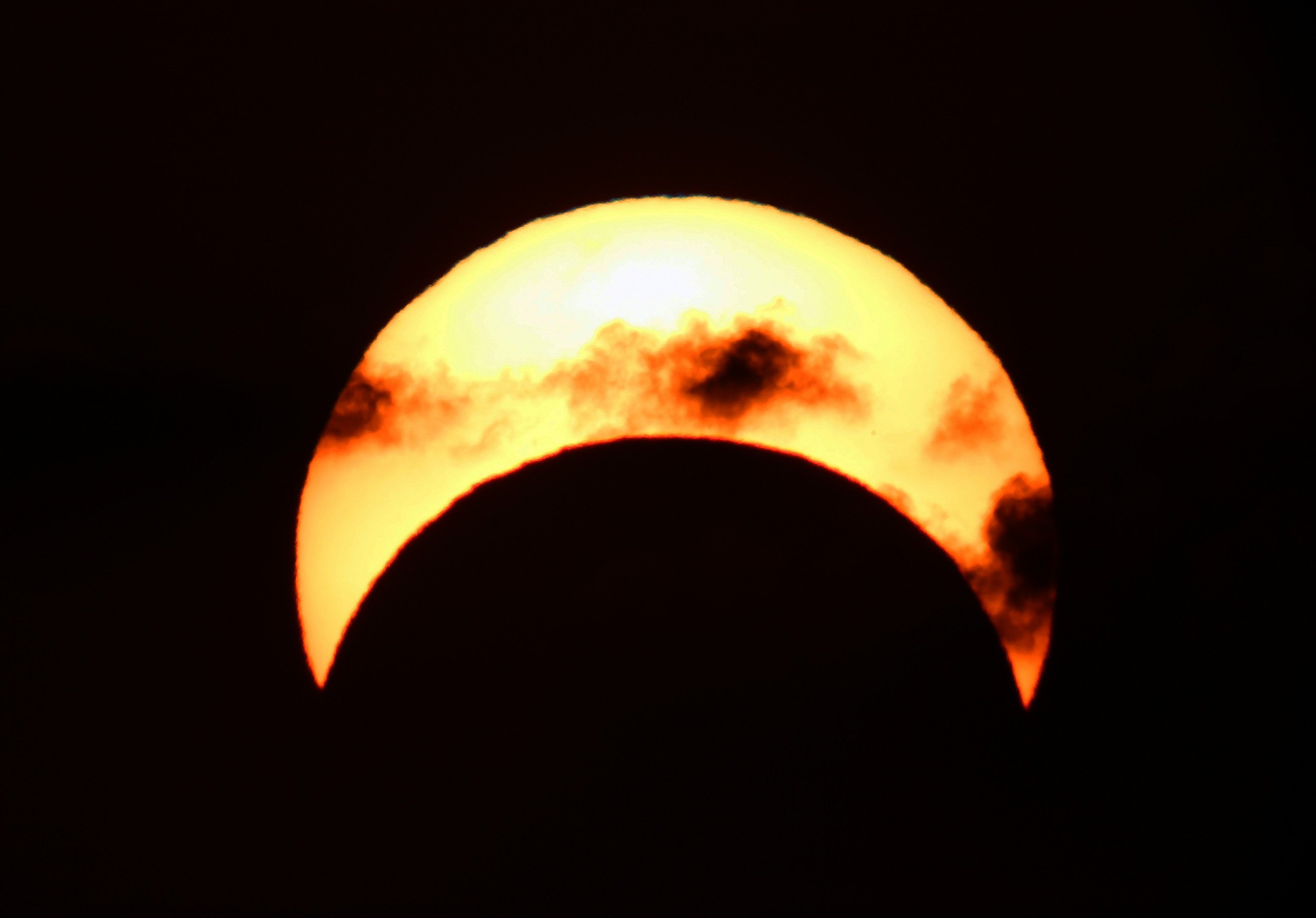Will Pakistan see any solar, lunar eclipse in 2021?
The world will witness four eclipses this year
January 01, 2021

- World to see four eclipse this year
- None would be visible from Pakistan
The year 2021 will witness four eclipses but none of them will be visible from Pakistan.
The first event of the year would be a total lunar eclipse on May 26 which will be seen over south/ east Asia, Australia, much of North America, South America, Pacific, Atlantic and Indian oceans, and Antarctica.
The second would be an annular solar eclipse on June 10 which would fall on much of Europe and Asia, north/west Africa, much of North America, Atlantic, and the Arctic.
The third event is a partial lunar eclipse falling on the night between November 18 and 19 which will be seen over much of Europe and Asia, north/ west Africa, north and south America, Pacific, Atlantic, and Indian oceans, and the Arctic.
While the fourth occasion is a total solar eclipse on December 4 and it will be visible in the south of Australia, Africa, and South America, the Pacific, Atlantic and Indian oceans, and Antarctica.
Two types of eclipses are visible from the Earth - the eclipse of the sun and the moon. These occur when the Sun, Earth, and the Moon align in a straight or almost straight configuration.
Read more: Solar eclipse 2020 live updates: How and when to watch the suraj grahan in Pakistan
What is a solar eclipse?
When the new moon moves between the Sun and the Earth, blocking out the Sun's rays and casting a shadow on parts of the Earth.
Types of solar eclipse
Partial solar eclipses occur when the Moon only partially obscures the Sun's disk and casts only its penumbra on Earth.
Annular solar eclipses take place when the Moon's disk is not big enough to cover the entire disk of the Sun, and the Sun's outer edges remain visible to form a ring of fire in the sky. An annular eclipse of the Sun takes place when the Moon is near apogee, and the Moon's antumbra falls on Earth.
Total solar eclipses happen when the Moon completely covers the Sun, and it can only take place when the Moon is near perigee, the point of the Moon's orbit closest to Earth. You can only see a total solar eclipse if you're in the path where the Moon casts its darkest shadow, the umbra.
Hybrid Solar Eclipses, also known as annular-total eclipses, are the rarest type. They occur when the same eclipse changes from an annular to a total solar eclipse, and/or vice versa, along the eclipse's path.
What is a lunar eclipse?
A lunar eclipse occurs when Earth comes between the Sun and the Moon and blocks the Sun's rays from directly reaching the Moon. Lunar eclipses only happen at Full Moon.
Types of lunar eclipse
A total lunar eclipse occurs when Earth's umbra, the central and dark part of its shadow, covers all of the Moon's surface.
Partial Lunar Eclipses occur when only part of the Moon's surface is obscured by Earth’s umbra, we see a partial lunar eclipse.
A penumbral lunar eclipse happens when the Moon travels through the faint penumbral portion of Earth’s shadow.









